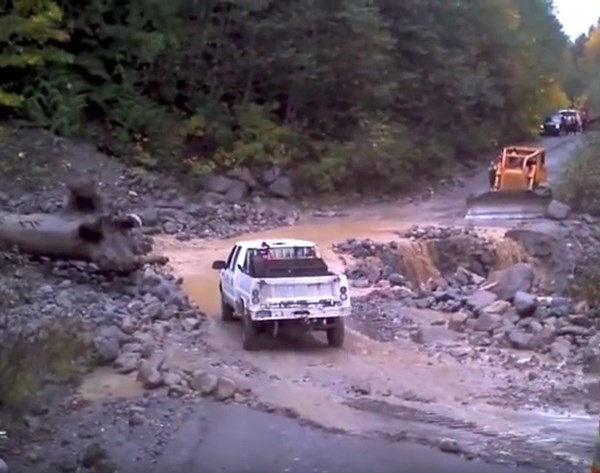The risk of severe flood and how to mitigate that risk aren’t concerns only of Squamish and the Sea to Sky Corridor. Most of the Lower Mainland could face tens of billions of dollars in damage due to sea level rise and climate change, according to the Fraser Basin Council.
The not-for-profit council, which is made up of representatives from all levels of government and members from the private sector, recently completed phase one of a Lower Mainland Flood Management Strategy (LMFMS).
The study area for the strategy included communities along the Fraser River from Hope to Richmond and along the coast from Squamish to White Rock.
In 2015, the Squamish-Lillooet Regional District contributed $7,045 to the Fraser Basin Council to help with its work and $7,100 is slated for the council in the 2016 budget, according to SLRD staff. The local district hosted a council board meeting in Squamish on June 2.
Flooding could lead to “the most costly natural disaster in Canadian history,” according to the strategy report.
Coastal flooding, were it to occur in 2016, would result in losses in the Lower Mainland – including Squamish – estimated at $19.3 billion, the document states. Losses from flood include damage to residential, commercial, industrial and public or institutional buildings, infrastructure, and agriculture.
The estimated cost of coastal flooding in 2100 Lower Mainland flood scenarios is $24.7 billion, according to the report.
Major regional infrastructure that is at risk from major flooding includes Highway 99.
The Squamish wastewater treatment plant and the Britannia Beach wastewater treatment facility are also vulnerable, according to the report. Squamish’s Municipal Hall is one of four city halls subject to flooding; the others are in Richmond, Delta and Chilliwack.
The District of Squamish is currently working on its Integrated Flood Hazard Management Plan (IFHMP). On Tuesday, district staff presented the River Flood Risk Mitigation Options report, prepared as part of the plan for council comments.
“Squamish is a bit of a leader,” the Fraser Basin’s council’s Steve Litke told The Squamish Chief, referring to the district’s flood hazard management plan.
SLRD director and Squamish Mayor Patricia Heintzman and Squamish Nation Chief Ian Campbell toured Squamish with Litke and the other 38 directors of the Fraser Basin Council board on June 1, prior to the board’s meeting the next day.
Heintzman said it was important for the regional district to be involved and support the council because the corridor can learn from the research and the issues facing other municipalities. “There’s lots of good co-learning in that,” Heintzman said.
Phase two of the Fraser Basin Council’s Lower Mainland Flood Management Strategy is currently underway and will involve more detailed study and cost estimates, Litke said. The provincial government has kicked in $1 million toward completing phase two, expected in 2018.
Phase three will follow and focus on implementation of the strategy, according to Litke.
For more information on the council’s flood report, go to www.floodstrategy.ca.



